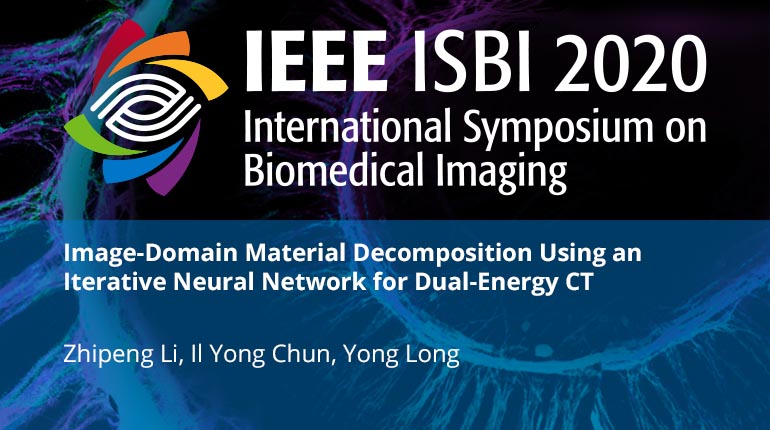
Already purchased this program?
Login to View
This video program is a part of the Premium package:
Image-Domain Material Decomposition Using an Iterative Neural Network for Dual-Energy CT
- IEEE MemberUS $11.00
- Society MemberUS $0.00
- IEEE Student MemberUS $11.00
- Non-IEEE MemberUS $15.00
Image-Domain Material Decomposition Using an Iterative Neural Network for Dual-Energy CT
Image-domain material decomposition is susceptible to noise and artifacts in dual-energy CT (DECT) attenuation images. To obtain high quality material images from DECT, data-driven methods are attracting widespread attention. Iterative neural network (INN) approaches achieved high image reconstruction quality and low generalization error in several inverse imaging problems. BCD-Net is an INN of which architecture is constructed by generalizing a block coordinate descent (BCD) algorithm that solves model-based image reconstruction using learned convolutional regularizers. We propose a new INN architecture for DECT material decomposition by replacing a model-based image reconstruction module of BCD-Net with a model-based image decomposition (MBID) module. Experiments with the extended cardiactorso (XCAT) phantom and patient data show that the proposed method greatly improves image decomposition quality compared to a conventional MBID method using an edge-preserving hyperbola regularizer and a state-of-the-art learned MBID method that uses different pre-learned sparsifying transforms for different materials.
Image-domain material decomposition is susceptible to noise and artifacts in dual-energy CT (DECT) attenuation images. To obtain high quality material images from DECT, data-driven methods are attracting widespread attention. Iterative neural network (INN) approaches achieved high image reconstruction quality and low generalization error in several inverse imaging problems. BCD-Net is an INN of which architecture is constructed by generalizing a block coordinate descent (BCD) algorithm that solves model-based image reconstruction using learned convolutional regularizers. We propose a new INN architecture for DECT material decomposition by replacing a model-based image reconstruction module of BCD-Net with a model-based image decomposition (MBID) module. Experiments with the extended cardiactorso (XCAT) phantom and patient data show that the proposed method greatly improves image decomposition quality compared to a conventional MBID method using an edge-preserving hyperbola regularizer and a state-of-the-art learned MBID method that uses different pre-learned sparsifying transforms for different materials.
 Cart
Cart Create Account
Create Account Sign In
Sign In





